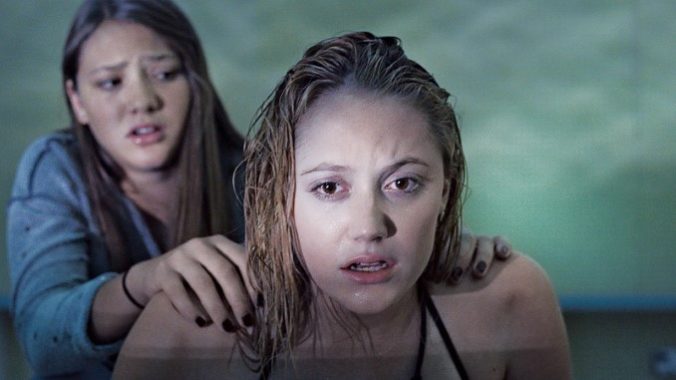
Assessing the quality of offerings available from Netflix in 2024, it quickly becomes clear that their horror library is a real mixed bag. As competing services, and especially genre-specific ones such as Shudder, continue to expand their horror movie collections, it’s harder and harder for Netflix to project any sense of comprehensiveness, and its library becomes more static and reliant upon Netflix Originals on a monthly basis. At various points in the last few years, for instance, Netflix could boast movies like The Shining, Scream, Jaws, The Silence of the Lambs or Young Frankenstein, along with recent indie greats like The Witch or The Descent. All of those films are now gone—usually replaced by low-budget, direct-to-VOD films with suspiciously similar one-word titles, like Demonic, Desolate and Incarnate.
Still, there are quality films to be found here, typically of the modern variety, from comedies like The Babysitter, to more obscure (and disturbing) titles such as The Wailing, It Follows, Apostle or newer films like His House and the Fear Street trilogy. Don’t expect to find many franchise staples in the mold of Halloween or Friday the 13th, but don’t sleep on The Haunting of Hill House, Cabinet of Curiosities or Fall of the House of Usher, either. They’re not technically movies, but they’re impossible to leave off this list if you’re looking for quality horror content.
You may also want to consult the following horror-centric lists:
1. The Wailing
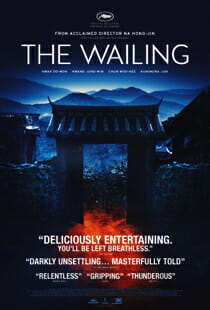 Year: 2016
Year: 2016
Director: Na Hong-jin
Stars: Kwak Do-won, Hwang Jung-min, Chun Woo-hee
Rating: NR
The U.S. title of Na Hong-jin’s film, The Wailing, suggests tone more than it does sound. There is wailing to be heard here, yes, and plenty of it, but in two words Na coyly predicts his audience’s reaction to the movie’s grim tableaus of a county in spiritual strife. Na trades in doubt and especially despair more than in what we think of as “horror.” He isn’t out to terrify us. He’s out to corrode our souls, much in the same way that his protagonist’s faith is corroded after being subject to both divine and infernal tests over the course of the film. The Wailing unfolds in Gokseong County, an agricultural community nestled among South Korea’s southern provinces. It’s a lovely, bucolic setting that Na and his cinematographer, the incredible Hong Kyung-pyo, take fullest advantage of aesthetically and thematically. The hushed serenity blanketing The Wailing’s opening images creates an atmosphere of peace that Na is all too happy to subvert (similar to how he subverts Bible verses). The film’s first full sequence shatters the calm as Sergeant Jeon Jong-gu (Kwak Do-won, turning in a knockout performance) is called to the scene of a savage multiple murder. When Jong-gu shows up, all is bedlam; people are screaming and crying, emergency workers litter the area like ants at a gory picnic, and the killer sits in a stupor, unaware of neither the mayhem nor the vicious boils coating their skin. This is an incredibly creepy and oft-unsettling film, but Na finds the tug of disbelief far more upsetting than the sight of bodies cut apart and blood splattering the wall. What do you do when your holy authority figures fail you? What do you do when you can’t trust your perception? Na has made these ideas, though hardly new in the horror canon, his film’s full purpose, and his conclusions are devastatingly bleak. When The Wailing arrives at its final, spectacular half hour, you’ll vow never to ask these questions about your own life, ever. You may not leave the theater scared, but you will leave it scarred, which is by far a more substantive response than naked fear. —Andy Crump
2. It Follows
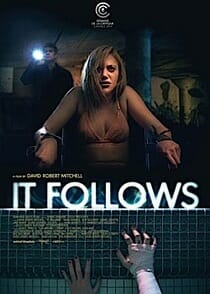 Year: 2015
Year: 2015
Director: David Robert Mitchell
Stars: Maika Monroe, Keir Gilchrist, Olivia Luccardi, Lili Sepe, Daniel Zovatto, Jake Weary
Rating: R
The specter of Old Detroit haunts It Follows. In a dilapidating ice cream stand on 12 Mile, in the ’60s-style ranch homes of Ferndale or Berkley, in a game of Parcheesi played by pale teenagers with nasally, nothing accents—if you’ve never been, you’d never recognize the stale, gray nostalgia creeping into every corner of David Robert Mitchell’s terrifying film, but it’s there, and it feels like Metro Detroit. It Follows is a film that thrives in the borders, not so much about the horror that leaps out in front of you, but the deeper anxiety that waits at the verge of consciousness—until, one day soon, it’s there, reminding you that your time is limited, and that you will never be safe. Forget the risks of teenage sex, It Follows is a penetrating metaphor for growing up. —Dom Sinacola
3. The Babadook
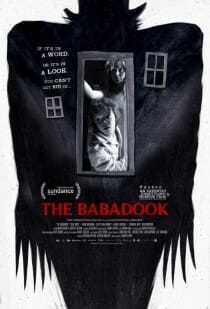 Year: 2014
Year: 2014
Director: Jennifer Kent
Stars: Essie Davis, Noah Wiseman
Rating: NR
Classifying Jennifer Kent’s feature debut, The Babadook, is tricky. Ostensibly this is a horror film—freaky stuff happens on an escalating scale, so qualifying Kent’s tale of a single mother’s fractious relationship with her young son with genre tags seems like a perfectly logical move. But The Babadook is so layered, so complex and just so goddamned dramatic that categorizing it outright feels reductive to the point of insult. There’s a grand divide between what Kent has done here and what most of us consider horror. You’ll spend your first week after the experience sleeping with the lights on. You will also come away enriched and provoked. Australian actress-turned-filmmaker Kent has made a movie about childhood, about adulthood and about the nagging fears that hound us from one period to the next. There’s a monster in the closet—and under the bed, and in the armoire, and in the basement—but the film’s human concerns are emotional in nature. They’re not aided by the ephemeral evil lurking in the dark places of its characters’ hearts, of course; going through personal trauma is enough of a chore when you’re not being stalked by the bogeyman. —Andy Crump
4. His House
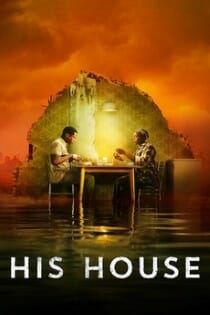 Year: 2020
Year: 2020
Director: Remi Weekes
Stars: Wunmi Mosaku, Sope Dirisu, Matt Smith
Rating: NR
Nothing sucks the energy out of horror than movies that withhold on horror. Movies can scare audiences in a variety of ways, of course, but the very least a horror movie can be is scary instead of screwing around. Remi Weekes’ His House doesn’t screw around. The film begins with a tragedy, and within 10 minutes of that opening handily out-grudges The Grudge by leaving ghosts strewn on the floor and across the stairs where his protagonists can trip over them. Ultimately, this is a movie about the inescapable innate grief of immigrant stories, a companion piece to contemporary independent cinema like Jonas Carpignano’s Mediterranea, which captures the dangers facing immigrants on the road and at their destinations with brutal neorealist clarity. Weekes is deeply invested in Bol and Rial as people, in where they come from, what led them to leave, and most of all what they did to leave. But Weeks is equally invested in making his viewers leap out of their skins. —Andy Crump
5. The Haunting of Hill House
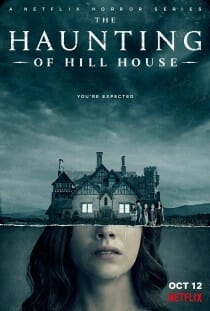 Year: 2018
Year: 2018
Director: Mike Flanagan
Stars: Henry Thomas, Michiel Huisman, Carla Gugino, Elizabeth Reaser, Oliver Jackson-Cohen, Kate Siegel, Victoria Pedretti
The aesthetic of The Haunting of Hill Housemakes it work not only as horror TV, but also as a deft adaptation of Shirley Jackson’s classic novel. The monsters, ghosts, and things that go bump on the wall are off-screen, barely shown, or obscured by shadow. The series even goes back to some of the first film adaptation’s decisions, in terms of camera movement and shot design, in order to develop uneasiness and inconsistency. Well, maybe “inconsistency” is the wrong word. The only thing that feels truly inconsistent while watching it is your mind: You’re constantly wary of being tricked, but the construction of its scenes often gets you anyway. By embracing the squirm—and the time necessary to get us to squirm rather than jump—The Haunting of Hill House is great at creating troubling scenarios, and even better about letting us marinate in them. —Jacob Oller
6. The Fall of the House of Usher
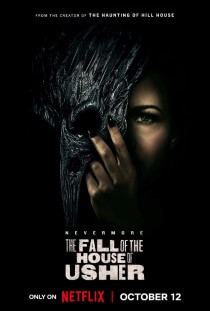 Year: 2023
Year: 2023
Director: Mike Flanagan
Stars: Bruce Greenwood, Mary McDonnell, Carla Gugino, Kate Siegel, Henry Thomas, Zach Gilford, Carl Lumbly, Mark Hamill
No one else in this space is doing what Mike Flanagan does, mining our deepest emotional fears and unspoken desires for the sort of real-life nightmare fuel that’s much, much scarier than any monster under the bed. Through stories that wrestle with everything from questions of faith and belief to falling in love and what it means to truly die, Flanagan’s deeply human horror universe is truly something beautiful to behold.
Though The Fall of the House of Usher is primarily grounded in Edgar Allan Poe’s titular short story of the Usher siblings, Flanagan deftly mixes in elements from many of the author’s other famous works, including “The Tell-Tale Heart,” “The Raven,” “The Murders in the Rue Morgue,” “The Masque of the Red Death,” “The Black Cat,” and more. Episodes are freely littered with Poe references large and small, from character names to full-on poetry recitations, and the series’ larger story reflects the author’s lifelong fascination with themes of guilt, death, paranoia, obsession, and delusion. One part horror-tinged Succession knockoff and one part modern day morality play, The Fall of the House of Usher is both a darkly comedic excoriation of the uber-rich and a slow-moving emotional car crash that explores the dysfunction at the heart of a family that’s losing its members one by one. —Lacy Baugher Milas
7. Midnight Mass
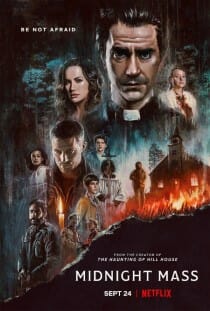 Year: 2021
Year: 2021
Director: Mike Flanagan
Stars: Zach Gilford, Kate Siegel, Kristin Lehman, Samantha Sloyan, Henry Thomas, Hamish Linklater
On Midnight Mass’ Crockett Island, every islander feels rife with misfortune. The recent oil spill nearly annihilated the fish supply, tanking the island’s local fishing economy. Their homes splinter and peel in neglect to the ocean’s elements. The majority of residents have fled the island for lack of opportunity, leaving a paltry few behind. Only two ferries can take them to the mainland. Hope runs in short supply—and a major storm brews on the horizon.
Everything beyond that for this seven-episode series is a true spoiler, but what can be said is that even with its dabblings in the supernatural, Midnight Mass (created by The Haunting’s Mike Flanagan, in his most recent collaboration with Netflix), is a show that burrows inwards instead of outwards. With both the physical claustrophobia of Crockett’s setting and the internal suffering of characters placed in center stage, Midnight Mass concerns itself with horrors within: addictive tendencies, secret histories, and questions of forgiveness and belief. At one glance, it’s a series that’s mined Catholic guilt for gold. In another, it’s a measured, yet spooky take on group psychology, the need for faith in sorrow, and the ethics of leadership with such vulnerable followers, weighing whether these impulses represent human goodness, evil, or simply nothing at all.
“Blessed are those who have not seen and have believed.” Midnight Mass offers a chance for anyone to be doubting Thomas or true believer. What difference is a miracle from a supernatural event, anyway? —Katherine Smith
8. The Autopsy of Jane Doe
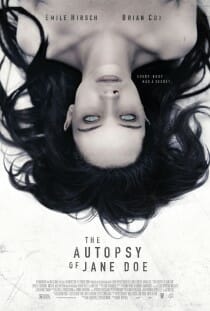 Year: 2016
Year: 2016
Director: André Øvredal
Stars: Emile Hirsch, Brian Cox, Olwen Catherine Kelly
Rating: R
Runtime: 99 minutes
Men don’t understand women. It’s the oldest cliché in comedy, in psychology, in nearly every book Dave Barry has ever written, in men’s and women’s health magazines alike. In André Øvredal’s The Autopsy of Jane Doe, the cliché is no less clichéd, but he does appropriate it for use in a powerful metaphor for male blindness to female traumas: The film is about a woman’s invisible suffering, the kind experienced beneath her exterior and which men can neither see nor comprehend, even when they have the benefit of being able to literally peel back her layers. You can probably guess from the title exactly what layers are being peeled, which is to say that you’ll know right off the bat whether The Autopsy of Jane Doe is for you or not. What you won’t discover without watching the film is the source of Jane’s anguish, though by the time Øvredal is done with us, you may wish you’d never looked close enough to learn for yourself. —Andy Crump
9. Creep
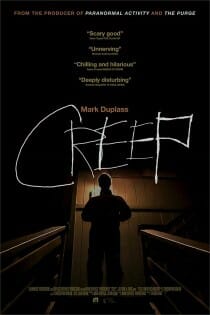 Year: 2014
Year: 2014
Director: Patrick Brice
Stars: Mark Duplass, Patrick Brice
Rating: R
Creep is a somewhat predictable but cheerfully demented little indie horror film, the directorial debut by Brice, who also released this year’s The Overnight. Starring the ever-prolific Mark Duplass, it’s a character study of two men—naive videographer and not-so-secretly psychotic recluse, the latter of which hires the former to come document his life out in a cabin in the woods. It leans entirely on its performances, which are excellent. Duplass, who can be charming and kooky in something like Safety Not Guaranteed, shines here as the deranged lunatic who forces himself into the protagonist’s life and haunts his every waking moment. The early moments of back-and-forth between the pair crackle with a sort of awkward intensity. Anyone genre-savvy will no doubt see where it’s going, but it’s a well-crafted ride that succeeds on the strength of chemistry between its two principal leads in a way that reminds me of the scenes between Domhnall Gleeson and Oscar Isaac in Ex Machina. —Jim Vorel
10. A Nightmare on Elm Street
 Year: 1984
Year: 1984
Director: Wes Craven
Stars: Heather Langenkamp, Robert Englund, John Saxon, Ronee Blakley, Johnny Depp, Amanda Wyss
Rating: R
Of the big three slasher franchises—Halloween, Friday the 13th and this—it’s Nightmare on Elm Street that presented us with the greatest and most complete of original installments. No doubt this is a factor of being the last to come along, as Wes Craven had a chance to watch and be influenced by the brooding Carpenter and the far more shameless and tawdry Cunningham in several F13 sequels. What emerged from that stew of influences was a killer who shared the indestructibility of Myers or Voorhees, but with a twist of Craven’s own demented sense of humor. That’s not to say Freddy Krueger (Robert Englund) is a comedian—at least not here in the first Nightmare, where he’s presented as a serious threat and a genuinely frightening one at that, rather than the self-parodying pastiche he would become in sequels such as Final Nightmare—but his gleeful approach toward murder and subsequent gallows humor make for a very different breed of supernatural killer, and one that proved extremely influential on post-Nightmare slashers. The film’s simple premise of tapping into the horrors of dreaming and questionable reality was like a gift from the gods presented directly to the artists and set designers, given carte blanche to indulge their fantasies and create memorable set pieces like nothing else ever seen in the horror genre to that point. It’s a phantasmagoria of morbid humor and bad dreams. —Jim Vorel
